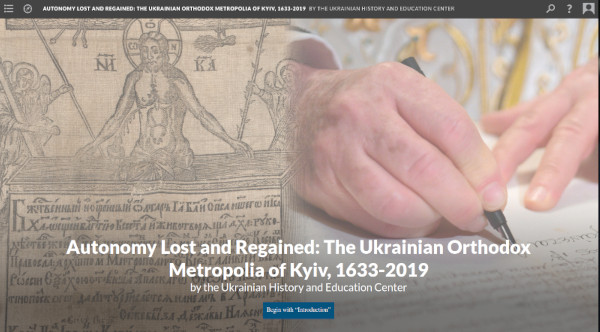View the online exhibition
For people following the news from Ukraine in 2019 who were unfamiliar with the history of the Orthodoxy in Ukraine, the grant of autocephaly to the newly reorganized Orthodox Church of Ukraine by the Ecumenical Patriarch of Constantinople may have seemed like a radical innovation or a historical rupture. Or they may have simply been baffled by all of the fuss.
In fact, the events of 2019 were not so much a rupture as a re-connection. Rather than a radical innovation, it was the culmination of over a century of determined effort.
This exhibition tells the story of the long path from the extraordinary flowering of the Kyivan Church under Petro Mohyla and his successors in the middle of the 17th century, through the incorporation of the Kyiv Metropolia into the Moscow Patriarchate, and finally to the struggles for the renewal of local autonomy during the 20th and 21st centuries. It also explores the centuries-long fraught relationship betweek Kyiv and Moscow, how that relationship played out in the sphere of religion, and how those events related to the surrounding cultural and geopolitical forces. It includes liturgical textiles from the 17th to the 19th centuries, as well as artifacts, documents, and photographs from the 1910s to 2019.
This exhibition is accessible online, as well as in person. The online and in-person versions tell the same story, but they are not identical: the in-person version has items that are not online, and the online version has additional explanations and context.
The in-person exhibition is generally open 9am-5pm on business days, except Federal holidays and Orthodox feast days (Old Calendar). Please contact us to confirm hours. The in-person exhibition will remain up through June 2022.
Special hours: the in-person exhibition will be open from 12pm to 4pm on Saturday, April 30 and 1pm to 4pm on Sunday, May 1 for St. Thomas Sunday weekend.





